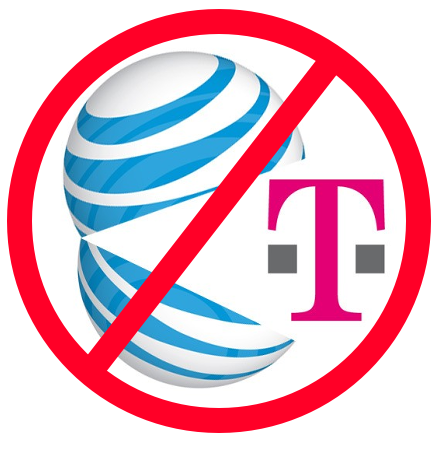
$39 Billion AT&T for T-Mobile Bid Falls Apart over Antitrust
 In an attempt to buy growth and unclog its wireless spectrum congested by data-guzzling iPhones, AT&T made a $39 Billion bid for T-Mobile, the weakest of the four major US cellphone carriers. On Monday, after enormous regulatory and antitrust resistance and skirmishes all across the Washington beltway, they decided to end the long battle. The proposed merger would have created a duopoly – AT&T and Verizon – controlling 75% of the US market, and its failure comes as no large surprise to the investment community. Tero Kuittinen, an independent research analyst, echoed the anti-climax, calling it a “mirage, [a] dream of a merger.”
In an attempt to buy growth and unclog its wireless spectrum congested by data-guzzling iPhones, AT&T made a $39 Billion bid for T-Mobile, the weakest of the four major US cellphone carriers. On Monday, after enormous regulatory and antitrust resistance and skirmishes all across the Washington beltway, they decided to end the long battle. The proposed merger would have created a duopoly – AT&T and Verizon – controlling 75% of the US market, and its failure comes as no large surprise to the investment community. Tero Kuittinen, an independent research analyst, echoed the anti-climax, calling it a “mirage, [a] dream of a merger.”
A portfolio manager on Societe Generale’s Risk Arbitrage desk laughed when I discussed the deal with him in March 2011, saying there was absolutely no way it would go through regulatory bodies like the Federal Communications Commission or Justice Department.
The bad news for AT&T doesn’t end with the dashed hopes of consolidation and spectrum decongestion. Per the terms of the merger agreement, AT&T must now pay Deutsche Telekom, T-Mobile’s parent company, an enormous, 10.2% of the deal value, breakup fee of $4 Billion (one of the largest ever, according to Dealogic and the Wall Street Journal) wiping out AT&T’s last quarter’s normalized net income. The size of the fee and the absence of an antitrust contingency clause in the merger agreement has left some wondering what “the bankers were smoking” when they drafted the breakup clause on behalf of their client.
Even more, the scuttled bid also highlights the ever-present regulatory risk of large cap M&A, amplified by the current administration’s tough stance on antitrust issues. In a statement Sharis A. Pozen, the Justice Department’s acting assistant attorney general for antitrust, said, “Consumers won today. Had AT&T acquired T-Mobile, consumers in the wireless marketplace would have faced higher prices and reduced innovation.”
Regulators use the Herfindahl-Hirschman Index (HHI) to measure market concentration by the summation of the squares of the market shares of each industry participant. For example, if there are four players an in industry, each with 25% market share, the HHI calculation will be as follows: 252 + 252 + 252 + 252 = 625 + 625 + 625 + 625 = 2,500.
A HHI score below 100 signals a highly competitive industry; a HHI score above 2,500 signals a highly concentrated one. Using market share data from Seeking Alpha, the proposed merger would have brought an already highly concentrated industry from 2,544 to 3,226.
If antitrust enforcement becomes increasingly tougher, there is a chance we could see M&A move further downmarket, where large acquirers can snap up a lot of smaller targets without running into regulatory problems and having to pay annoying, if not exorbitant, breakup fees.